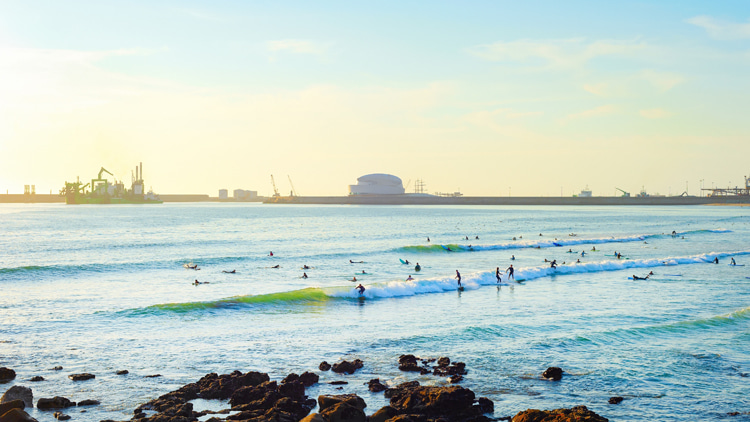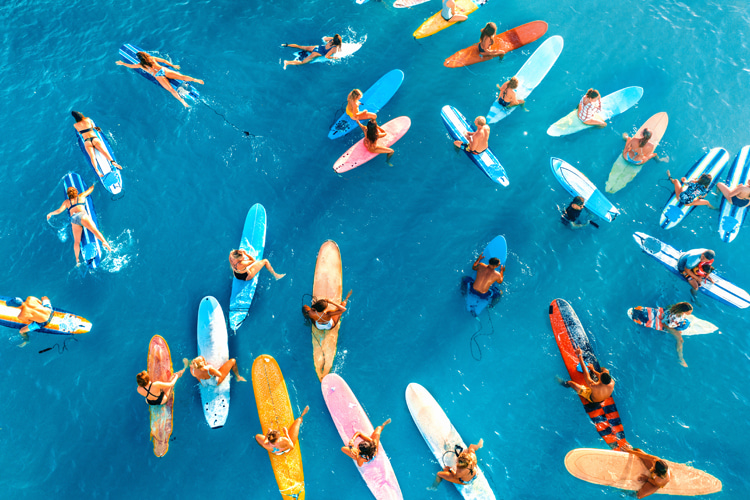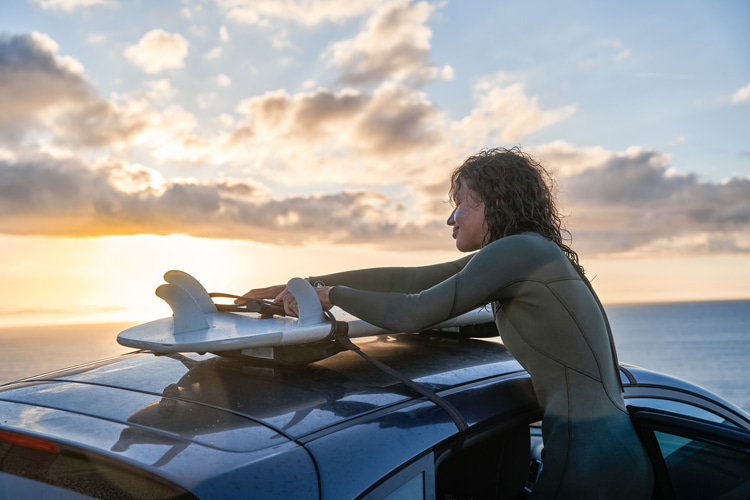How far are you willing to drive your car on a Saturday morning to find secluded surf? Up to 50 miles (80 kilometers)? Or not that much?
It's probably politically incorrect to say that there are too many people surfing nowadays.
But sometimes, it's impossible to ignore the lack of opportunities when the conditions are pristine.
The truth is that the world's excellent, very good, and good surf breaks are often ultra-crowded on any sunny weekend, even if it's freezing cold.
And we're not even talking about a two handful of spots across the world.
We can surely count thousands of lineups where it's hard to take off on a sound set wave without feeling the pressure and the shoulders of a few fellow wave riders next to you.
And if that ain't enough to remove the relaxing factor from your surf session, you'll have the occasional longboarder, stand-up paddler, or irresponsible foiling enthusiast waiting for the best moment to steal your long-awaited wave.
These days, surfing is stressful.
Blame it on social media, the inexpensive beginner surfboards, the appropriation of surfing by TV shows, the big waves of Nazaré, and the Olympic surfing moments where photos of surfers kicking out of waves break the news around the world.
I nearly stopped paddling out at my home surf break, especially during the weekend.
It has become virtually impossible to trim a nicely shaped wave without having someone drop in on me or cut my ride in half because they paddled through my surf line.
The last time it happened, I didn't even spend the energy to complain, discuss, or lecture the offenders about the basic rules of surf etiquette.

Driving Toward Seclusion
After over 30 years of surfing, you just shrug your shoulders and move on. What can I do? Ask people to leave me alone? Tell them they should know the priority rules before getting wet?
It's pointless. The only alternative left for me is to get in the car and drive as much as I'm willing to drive to get a fair share of waves.
If you've ever felt this way, you know we all have a sweet spot or a pain point regarding driving to surf.
How many miles are enough? And how much time is it worth to spend to be out there in the water for an hour or two?
The older we get, the less tolerance for not having our own little moment after a stressful working week.
Personally, I might have more patience and tolerance for everything else than my right to do what makes me feel good, grounded, and mentally healthy.
Driving to surf has become inevitable in my life.
It's my rather non-sustainable weekly escape from city life and computer screen time.
The concept of "drive to surf" reminds me of the popular Netflix series "Drive to Survive," which ironically has exponentially boosted Formula 1's popularity since the first episode aired in March 2019.
Surfing is supposed to be a laid-back pastime, not a stressful battleground where people hustle for a temporary, Nature-generated resource.
In the past 10 years, I've been increasing the number of times I am OK to drive around 12.5 miles (20 miles) to get my surf fix.
And that's not my limit. I feel I can stretch that figure way up.
Which leads me to the question: If the surfing figures continue to grow, how can the same natural resources not reach the point of total and anarchic saturation in the next years?

Lineups: A Dystopic Future
The industry is not sleeping, though.
New wave pool technologies are constantly popping up and opening liquid riding opportunities for surfers inland.
The problem with most of them is the business model and the fact that they don't address most of the pockets.
The price per wave at these large water basins is still irrationally high for the average surfer.
Things will eventually tend to get better, though.
One of these days, speaking with one of Europe's largest surfboard manufacturers, he surprised me with the news of how river surfing is growing.
Apparently, there's more and more demand for river wave-driven surfboard shapes. Interesting, isn't it?
Think about this: the first generation of surfers who started in their teenage years during the 1950s and 1960s was mostly limited to the United States, with a few exceptions in Australia, Europe, and South Africa.
They are only a fraction of the number of millennials and Gen Zs who got into surfing at the same age or even younger.
Now imagine when this large audience batch reaches their 60s and 70s.
They will be in the water with the younger generations, making lineups even harder to navigate.
Will they also drive to surf? Will their cost of opportunity be even more extreme?
If not, how will the surfing population be distributed? Could the lineups become a dystopic war zone where only the fittest and strongest can ride a perfect wave?
I am a moderately pessimistic mind when it comes to the human race. Maybe, but only maybe, we will be forced to fly to surf.
But by then, my waves will be others.
Words by Luís MP | Founder of SurferToday.com


